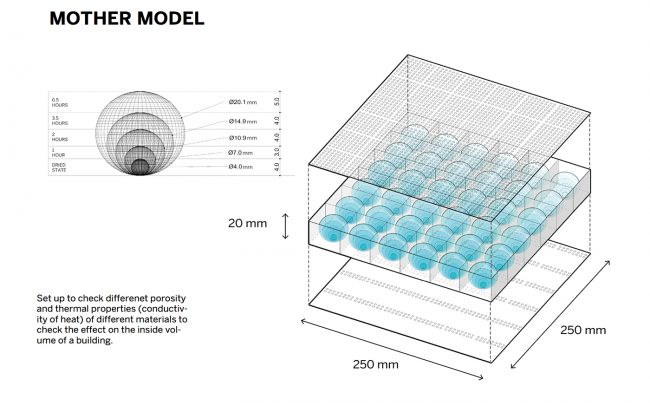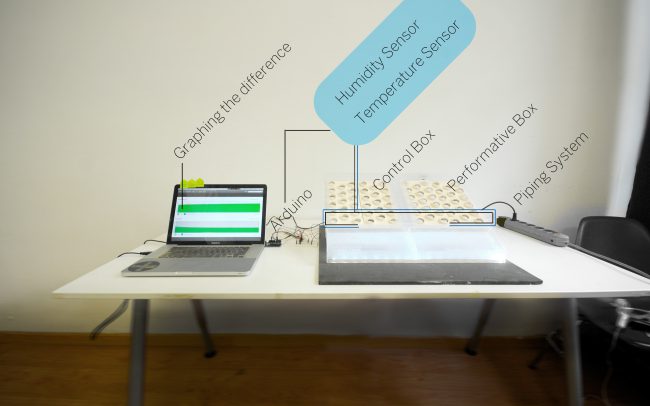an evaporative cooling device
The increasing development and application of “smart” materials in other industries has opened up new design possibilities at the material and “behavioral” scale of architecture. The studio [DMIC] Digital Matter – Intelligent Construction in the academic year 2014 at the Institute of Advanced Architecture of Catalonia aimed to redefine and embed ‘intelligence’ into the built environment by the use of responsive materials, designing and implementing systems to aid the building performance by digital simulations and fabrication.
The built environment then becomes a living thing as part of nature and not outside of it. Buildings start working as organisms with biological systems that are live processes between the building and its surroundings.
This project aims to speculate the thermodynamic processes in a building and how these can be tackled passively with a class of materials called ‘hydrogel’. The term ‘hydrogel’ refers to a class of substances that absorb and retain 500 times their weight in water.
Chemically they can be insoluble polymers of hydroxyethyl acrylate, acrylamide, polyethylene oxide, and others.
As a cooling aid they work by exposing the absorbed water to a large surface area. Since the heat of vaporization of water is about 0.6 kilocalories per gram, a cooling effect occurs.
Taking this phenomenon as a hypothesis, the project aims at prototyping a custom building element by the hygothermal (humidity and temperature) analysis of buildings to meet the habitable conditions required for the comfort zone in a particular context.
The final prototype “Hydroceramic” works as an evaporative cooling device which reduces temperature and increases the humidity and is capable of lowering down the temperature of the indoor environment by about 5 to 6 degree. It’s passive embedded intelligence makes its performance directly proportional to the heat in the outdoor environment i.e. it cools more when it is more hot and doesn’t cool when no evaporation is occurring. These results were determined by an experiment set up to test the effect of hydrogel in reducing the temperature of a closed environment at the same time establishing that clay is the best material to house hydrogel in the prototype. Clay, Aluminum and Acrylic were tested against a control which helped determine that it is the porous nature of clay that makes it aid the cooling properties of hydrogel in the best way.
It can help save up to 28% of overall electricity consumption caused by the traditional air-conditioning and can be used as an low-cost alternative building technology as both clay and hydrogel are inexpensive.









